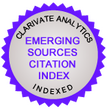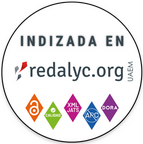O ENSINO DE SUSTENTABILIDADE E ÉTICA NOS NEGÓCIOS COM A TAXONOMIA DE BLOOM
DOI:
https://doi.org/10.13058/raep.2012.v13n4.83Palavras-chave:
aprendizagem, ética nos negócios, avaliação, sustentabilidade, Taxonomia de Bloom.Resumo
O presente estudo compartilha a experiência de planejamento, execução e avaliação de uma disciplina de sustentabilidade e ética nos negócios realizada com base na Taxonomia de Bloom. Foram sujeitos da pesquisa alunos de um curso de pós-graduação in company, divididos em duas turmas de 18 e 19 alunos. A análise de dados foi quantitativa em um primeiro momento e qualitativa no segundo, envolvendo a análise de todas as questões que compuseram a avaliação dos alunos. Este estudo oferece uma alternativa de avaliação da aprendizagem coerente com o planejamento dos objetivos propostos para o curso. Concluiu-se que a Taxonomia de Bloom é uma ferramenta que se mostrou adequada para verificação da aprendizagem pretendida na área de sustentabilidade e ética nos negócios e viável para permitir uma devolutiva aos alunos em cada etapa do processo educativo, além de ser prática e útil, contribuindo para planejamento, organização e controle dos objetivos educacionais.
Downloads
Downloads
Publicado
Como Citar
Edição
Seção
Licença
Ao aceitar que seu manuscrito seja publicado no periódico Administração: Ensino e Pesquisa (RAEP), os autores declaram que o trabalho é de sua exclusiva autoria e assumem, portanto, total responsabilidade pelo seu conteúdo. Os autores concedem à RAEP uma licença de direitos não exclusivos para utilizar o trabalho das seguintes formas:
(1) vender e/ou distribuir o trabalho em cópias impressas ou em formato eletrônico;
(2) distribuir partes ou o trabalho como um todo com o objetivo de promover a revista por meio da internet e outras mídias digitais e impressas e;
(3) gravar e reproduzir o trabalho em qualquer formato, incluindo mídia digital.
Autores e leitores têm permissão para compartilhar o material, usá-lo em aulas, apresentações e também para outros fins, e criar novos conhecimentos a partir de qualquer publicação da RAEP, desde que seja atribuído o devido crédito ao trabalho original e os seus autores, por meio de citações, referências e outros meios.
O periódico adota medidas preventivas para identificar plágio por meio de software específico destinado para este fim.
A RAEP não cobra dos autores qualquer valor pela submissão ou publicação dos artigos aprovados.
Em consonância com as políticas da revista, a cada artigo publicado será atribuída uma licença Creative Commons CC-BY 4.0.










